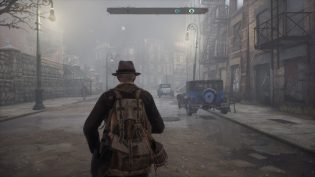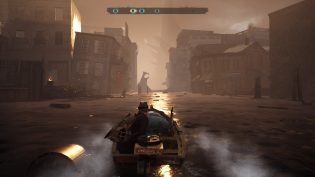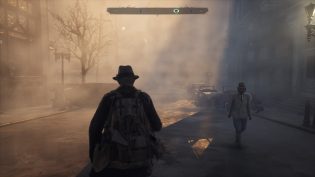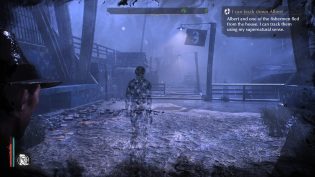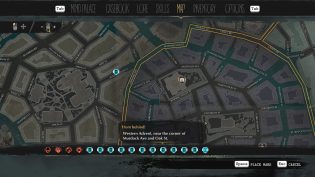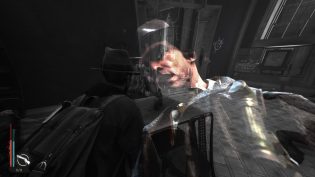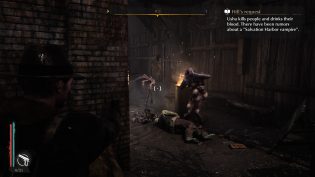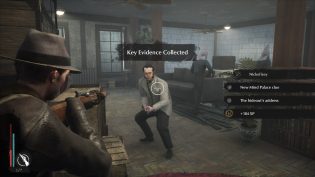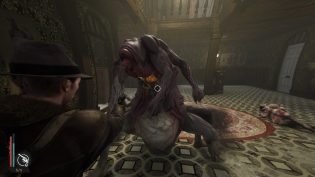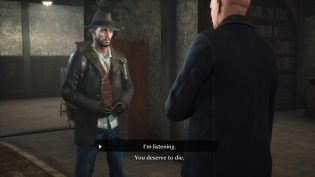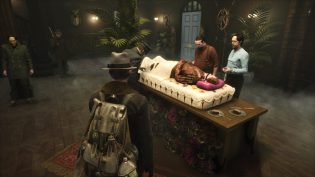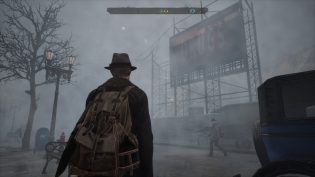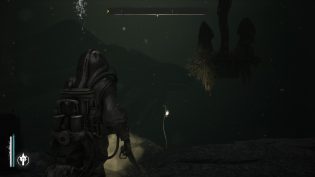A quick important note before I begin – I currently work at Frogwares and while I had no input in The Sinking City, nor any of its post-launch support, me working with the team that developed the game may still bias my opinion no matter how hard I try to let it not affect what I think of the game.
I’m not aware of all the details of what happened early in what would become The Sinking City development, but back in 2014 Frogwares announced that they will be developing a Call of Cthulhu game to be published by Focus Home Interactive. Few years of no news on the project later, things have changed. Cyanide were announced as a new developer for the Call of Cthulhu, while Frogwares were to develop their own separate take on the Lovecraftian lore with The Sinking City. Now that I’ve written about the utterly disappointing Cyanide title, is The Sinking City any different? Well, it’s plenty different. Not always for the better, though.
Most surprising thing about The Sinking City, I suppose, is that it’s an open world action adventure game. Not that Frogwares hasn’t produced something unexpected before (they did release a first person physics puzzle title and a MOBA-like project before), but tackling open world isn’t something mid-budget studios usually risk doing. For a good reason too, since while there are many different ways to do open world, some criminally underused, it’s still quite a challenge to make a big interconnected world that’s fun to navigate and explore. And it’s especially challenging to justify going open world, since so many games nowadays have open worlds just for the sake of it, without even bothering to make it interesting or unique.
Did Frogwares succeed with the open world nature of the game? Well, no. But they tried and the ideas that can be found in the game are genuinely curious, even if not well executed. If I had to compare how this open world feels to some other games, I’d say that this is closer to original Mafia and True Crime titles in regards of making an open world to tell a story in it, rather than using it as a sandbox and also close to the attempts at open world survival horror/action titles like Silent Hill: Downpour and Alone in the Dark (2008) in how atmospheric, moody and memorable the world feels to run around as a whole. The flooded city of Oakmont is amazing to just be in – the music that plays, the architecture around, the weather and day-night effects that constantly transform the city from beautiful to eerie and haunting. Running down the broken streets, seeing vague shapes in deep fog and hearing fantastic ambient music play often made me think of the best memories of Silent Hill, and some other night, some other district of the city would remind me of the creepy but enchanting nights in S.T.A.L.K.E.R. series.
But mechanically all of the gameplay in this open world tends to range from serviceable to horrendous. Investigative elements, nicely carried over and slightly changed and somewhat simplified from Sherlock Holmes games, are almost always a joy, finding evidence of some events, old notes, fragments of the past, questioning the NPCs – that whole part works really well. Running around the city or using a boat to get across the flooded sections – this is almost always a chore, but luckily the mood of the city described earlier helps and it doesn’t get as annoying as it could.
Finding where you need to go – well, this is both cool and frustrating as the developers decided to remove the usual concept of quest markers and instead give you the information you need to find the place you need and then leave the figuring out where it is to you. So you’d get a piece of information that says “the gang members gather in a house in that district, on this street, that’s between this avenue and that street” and you must use the map to figure out where it might be and then, when you’re in the area, figure out which of the houses is the correct one. It’s a brilliant idea, but since it’s repeated pretty much every single time you learn where you need to go next, it does become really tedious. But still, bonus points for being inventive.
Where things fall apart completely is with combat. There’s a lot of combat in this game and all of it is absolutely inexcusably terrible. Whenever you encounter monstrous enemies (there are a few human encounters which are just boring, but they’re very rare) just always be mentally prepared that you’ll die during the encounter for whatever reasons. Enemies have way too much health for what they are, most of them move incredibly fast and dodge out of your clumsy shots or melee hits with ease, there’s a sanity meter going that makes it even harder for you to do anything if it gets drained even a bit due to nauseating VFX and, if it gets too low, hallucination enemies appearing in addition to the real ones and you’re constantly low on resources. The last point is especially infuriating since it seems like the game wanted to force you loot every container and craft ammo and healing items, but (apart from never even introducing crafting) that’s just annoying as hell. An enemy may take, say, 10 shots and maximum amount of ammo you can have for the gun would be 16. Stealth doesn’t really exist, “weak points” are often impossible to hit, avoiding enemies is often impossible either since they gang up quickly. As a result, even The Evil Within resource management seems generous in comparison, just because there at least you had some meaningful ways to get around the limitations in smart ways.
And sadly, combat is almost always happening in any quest you’re doing at some point. In main story ones it might take longer until you get to a fight and the fight may be at least somewhat well designed. But most of the side quests are just dreadful fetch quests which all end up having horrible combat in locations that all look exactly the same (Dragon Age 2 looks extremely varied in comparison) while searching for the addresses you need to go next while getting crap for crafting as a reward. Horrible. There are a few good side quests that have at least some semblance of a good story, but most are just garbage.
Though, not like the story is fantastic in general. For all the amazing lore of the city that you may find, the actual story, characters and storytelling are pretty “okay” and never get great or memorable. There are cool moments, really nice morbid events, but that’s what they tend to be – sequences or events. Characters are mostly forgettable, dialogues are just fine, sometimes going into clunky territory and the topics and themes might be curious for those who have never ever delved into the “eldritch/cosmic horror” stories, but if you have they will be predictable and not particularly well told. Also, for all the horror topics, ideas, themes and the setting itself, it’s very hard to call anything about this game “scary”. Apart from the prospect of engaging in combat again. Or those stupid diving segments. Oh and how come despite having so many good sound design elements enemies always sound like they’re in the next room even when they spawn several floors above or below you?
What was attempted with The Sinking City is commendable and quite unique. And some of the game’s aspects are genuinely great, but I can’t help but feel that a lot of people would get frustrated with this game far easier than I have and won’t really have any desire to play the game past its opening sections. If you are curious, go for it, play just the main story sections and run around the city to enjoy the mood and the music. And maybe afterwards consider checking some of the more involved side quests. But if you’re looking for a more “traditional”, more sandbox-y open world experience – yeah, you won’t enjoy this at all.


